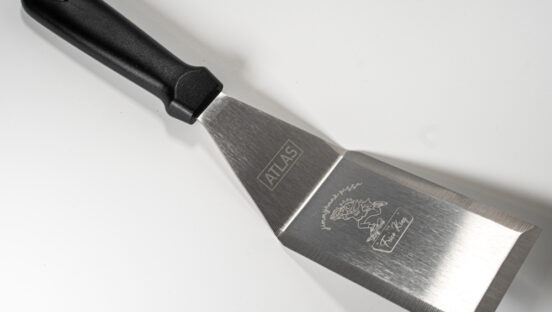Pizza Power 2003 – Pizza Industry Annual Report
It's that time of year again when PMQ crunches the numbers to see how the pizza industry has performed in the past year. There is some good news and bad news, so without delay, let's jump right in and see what the numbers say.
THE INDEPENDENTS
The good news this year seems to go in favor of the independents. As you can see by the pie charts on the opening page, the independents and all others not in the Top 25 captured more of the industry's total sales than the year before. In 2001, independents earned 47.38 percent of the total sales, but managed to increase that percentage to 49.47 percent for 2002. This is good news especially when the total industry sales are up 2 percent from the previous year. Total sales for the QSR pizza segment went from $29.41 billion in 2001 to $29.99 billion in 2002. The national average of sales per unit for independents also rose from $366,720 per unit 2001 to $389,111 in 2002, meaning the average sales per unit increased $22,391 for this segment. Not only did the sales per unit increase for independents, their percentage of the total number of units increased also. In 2001, independents and all others not in the Top 25 owned 59.48 percent of the total number of pizzerias and increased that number in 2002 to 60 percent.
TOP 25
While the independents have reasons to celebrate, many of those in the Top 25 have reasons to be concerned. Of the Big Four (Pizza Hut, Domino's, Papa John's and Little Caesars) Pizza Hut, Domino's and Papa John's posted higher sales than the year before. Pizza Hut's sales increased 2.10 percent. Domino's rose 3.48 percent and Papa John's sales were 0.14 percent higher than the year before. Little Caesars was reported to have a 7.60 percent decline in sales. One interesting note concerning the Big Four and their sales increases is the fact that all four decreased their number of units. You can see these changes in the Top 25 Pizza Chains By Sales chart in this article.
The Top 25, as a whole, lost ground to the independents and all others not in the Top 25 in both the percentage of total sales and percentage of total pizzerias in the U.S. Their woes don't stop there. The average sales per unit for the Top 25 fell from $598,000 in 2001 to $596,283 in 2002. Eleven of the Top 25 show a decrease in sales for 2002 and 15 companies list a decrease in the number of units. Of the Top 25, four of the companies listed this year are new entries.
THE WINNERS, THE LOSERS AND THE PMQ PIZZA INDUSTRY ENTERPRISE (PIE) OF THE YEAR.
PMQ would like to congratulate this year's winner of the PIE Award, Papa Murphy's Take 'N' Bake. The PMQ staff looked at several factors to determine who the PIE winner would be. The award didn't ride on sales alone, but included concept, sales, units, and history. Papa Murphy's was one of only seven companies in the Top 25 to post increases in both in both sales and units. Sales for Papa Murphy's increased 5.70 percent while the number of units increased 5.92 percent. One of the reasons for Papa Murphy's winning the PIE Award is the fact that while their concept of take-n-bake is still in its infancy, they continue to expand their concept entering traditionally tough markets, like Chicago, while posting sales increases. This is a concept that directly addresses the problems the frozen pizza segment has been posing in the past few years, which is the capturing of RTE (ready-to-eat) sales.
Papa Murphy's was also selected as the best pizza chain in America by Restaurants and Institutions magazine. The award was based on a national survey of restaurant guests. The study, commissioned by Restaurants and Institutions magazine, was based on guest responses to seven attributes. The respondents rated 133 national and regional chains on these seven attributes, which are: food quality, menu variety, value, service atmosphere, cleanliness and convenience. Papa Murphy's received the highest overall score in the pizza segment. "The significance of the Choice in Chains award lies in the fact that it is the loud, clear voice of restaurant guests, representing their preferences, whims and ever-changing tastes," said Patricia Dailey, Editor-in-Chief of Restaurants and Institutions magazine.
According to the Leading Edge Group, more Americans eat at home during rough economic times. Combine this with dual income families who have less time to spend with kids during the day and you can see how take-out is becoming a more desirable choice, not to mention that dual-income families usually have two commuters returning home, passing by the take-n-bake shop at the very time they're thinking about eating dinner. The concept of take-n-bake allows parents the satisfaction of providing a home-cooked meal while spending more time at home. Frozen pizza has already started to capture part of the RTE sales and consumer confidence in frozen pizza has been rising with a better quality product coming from the frozen pizza industry. In 1990, packaged pizza sales comprised 10.2 percent of U.S. retail dollar sales of pizza and by 2002 controlled 11.9 percent. Papa Murphy's is definitely proving that customers are willing to opt for cooking pizza themselves.
Congratulations to Papa Murphy's Take "N" Bake, the 2003 PMQ Pizza Industry Enterprise of the Year.
Other 2003 successes include Chuck E. Cheese's (CEC). CEC posted a 5.7 percent rise in sales with 7.71 percent more locations than the year before. Hungry Howie's Pizza also showed positive gains in both sales and number of units. Noble Roman's, which is focuses mainly on venues like airports, casinos, C-stores, travel plazas and such, showed tremendous growth as you can see in the chart on page 76.
Those not doing as well in 2002 include Little Caesars, Sbarro, Mr. Gatti's, Fox's Pizza Den. Little Caesars continued their trend of closing locations and lower sales than the year before. Sbarro also showed losses in units and sales again this year. The biggest drop in sales came from Mr. Gatti's with a 13.11 percent decline in sales from the previous year and a 2.50 percent decline in units. The biggest decline in units came from Shakey's Pizza, which had a 12.86 decline in units from the year before. Shakey's is also listed as having a 5.52 percent decline in sales from the previous year.
TRENDS
One of the main focuses of the Big Four last year was the addition of new menu items and bundled deals. The addition of dessert-like items and chicken products were evident in national advertising and marketing efforts by these companies. Boneless chicken, tenders, wings, cinnamon-laced products and specialty pizza were bundled together and offered as freebies with a pizza order or as an add-on for a special price. With the price wars from past years where the major chains established ridiculously low prices that strangled the entire industry, this change from low prices to new items and bundled deals is a welcomed strategy. Based on sales increases by the Big Four, it appears to be working.
Several factors can be considered for these changes in the past year. Last year was a tough year for many. It was the post 9/11 period and many Americans slowed much of their spending. While much of the rest of the country felt the strain of a soft economy, the restaurant industry marked its 12th consecutive year of real growth, according to the National Restaurant Association (NRA).
"Even against our nation's economic challenges, the restaurant-and-food service industry remains resilient and is expected to post over $426 billion in sales for 2003," said Steven C. Anderson, president and chief executive officer of the NRA. "As restaurants continue to grow in their role as an important and essential component of the American lifestyle, the industry further demonstrates why it is the cornerstone of the nation's economy, employment opportunities and communities."
According to the NRA, when it comes to how restaurants in different parts of the country will fare, the top regions in terms of sales growth are located in the South and the West – regions with the fastest growing local economies. Specifically, the Mountain region will again lead the nation with a projected restaurant sales growth of 6.6 percent. The East North Central region is projected to register sales growth 4.0 percent in 2003, the slowest of the nine Census regions.
On the state level, Nevada is expected to lead the nation with 7.1 percent sales growth. Arizona follows closely with 7.0 percent and Colorado and Utah both at 6.8 percent, are expected to post the next strongest growth numbers. Hawaii (3.0 percent) and the District of Columbia (3.2 percent) are projected to show the lowest growth in sales, associated with the continued weakness in tourism.
Another trend mentioned in the Leading Edge Report is the use of hot sauces and barbecue sauces in the packaged pizza market. This could be an indication of things to come, especially when you take into consideration all of the recent promotions of chipotle-themed items by nearly every restaurant group in America.
INTERESTING NOTES
It appears that there are two things to watch in pizza: family-friendly concepts and the c-store type locations. CEC, Noble Roman's and Happy Joe's Pizza appeared to have had a very successful year in 2002. Sales for CEC were up as well as units and Happy Joe's appeared to have had a very successful year in 2002. Sales for CEC were up as well as units and Happy Joe's, which also includes children's entertainment, showed a 21.51 percent increase in sales. While sales were up for Happy Joe's the number of units dropped 1.56 percent. CiCi's Pizza, which focuses on buffets with a reasonable price, have attracted families on a budget and showed decent sales increases, but have 11.20 percent more locations. They may be an up-and-coming franchise to watch. Noble Roman's showed signs of strength with their c-store strategy.
With the "older" generation becoming a larger group to reckon with, it may be of interest to remember that their eating habits change, meaning less pizza. Healthy alternatives, such as vegetarian pizza or offering less cheese and meat, could be a good way to sway them into eating more pizza.
CONCLUSION
With more and more homes requiring dual incomes to make ends meet, parents are looking for ways to spend more time at home. Workdays are getting longer and budgets remain tight. Frozen pizza has established the fact that convenience and price can sway consumers. The quality has increased and consumers have the confidence that they can cook a decent pizza at home. They also like the fact that can cook it at their leisure and the price is reasonable. Take 'N" bake could be the answer to recapturing this segment of customers who are slipping away from the RTE segment. With increases of sales at places like CEC, Happy Joe's and CiCi's family-friendly concepts also appear to be winners. In a nation that is traveling at the speed of DSL and cell phone signals, consumers are also getting the "pit stop" mentality and filling up the tank, grabbing a bite to eat and getting home or to work quickly. C-store concepts are doing well in these travel centers. It is evident with all of the co-branded locations you see at gas stations. With the major chains getting away from the price wars of years past, another opportunity emerges with bundled deals…and chicken and breadsticks add-ons seem to work.












